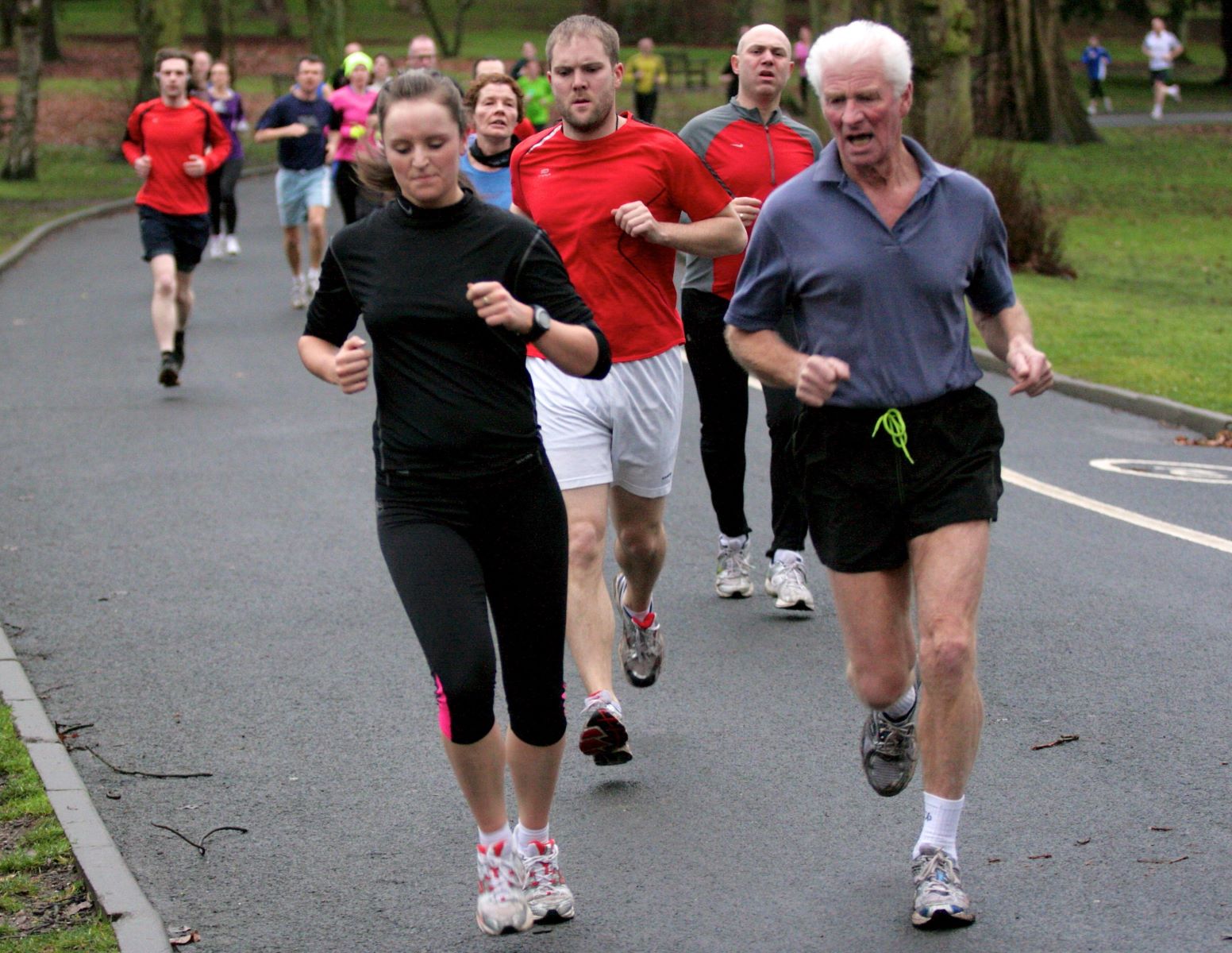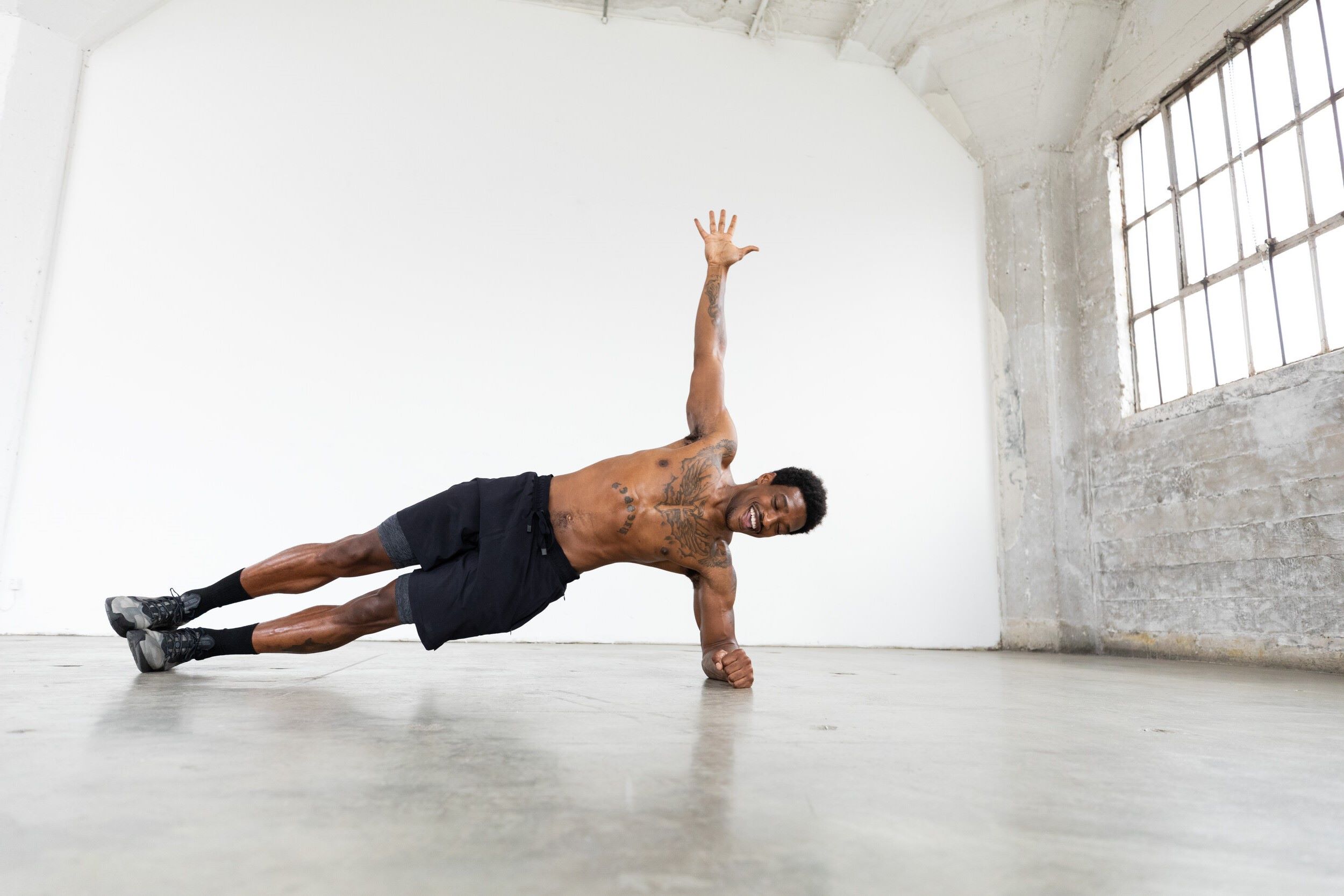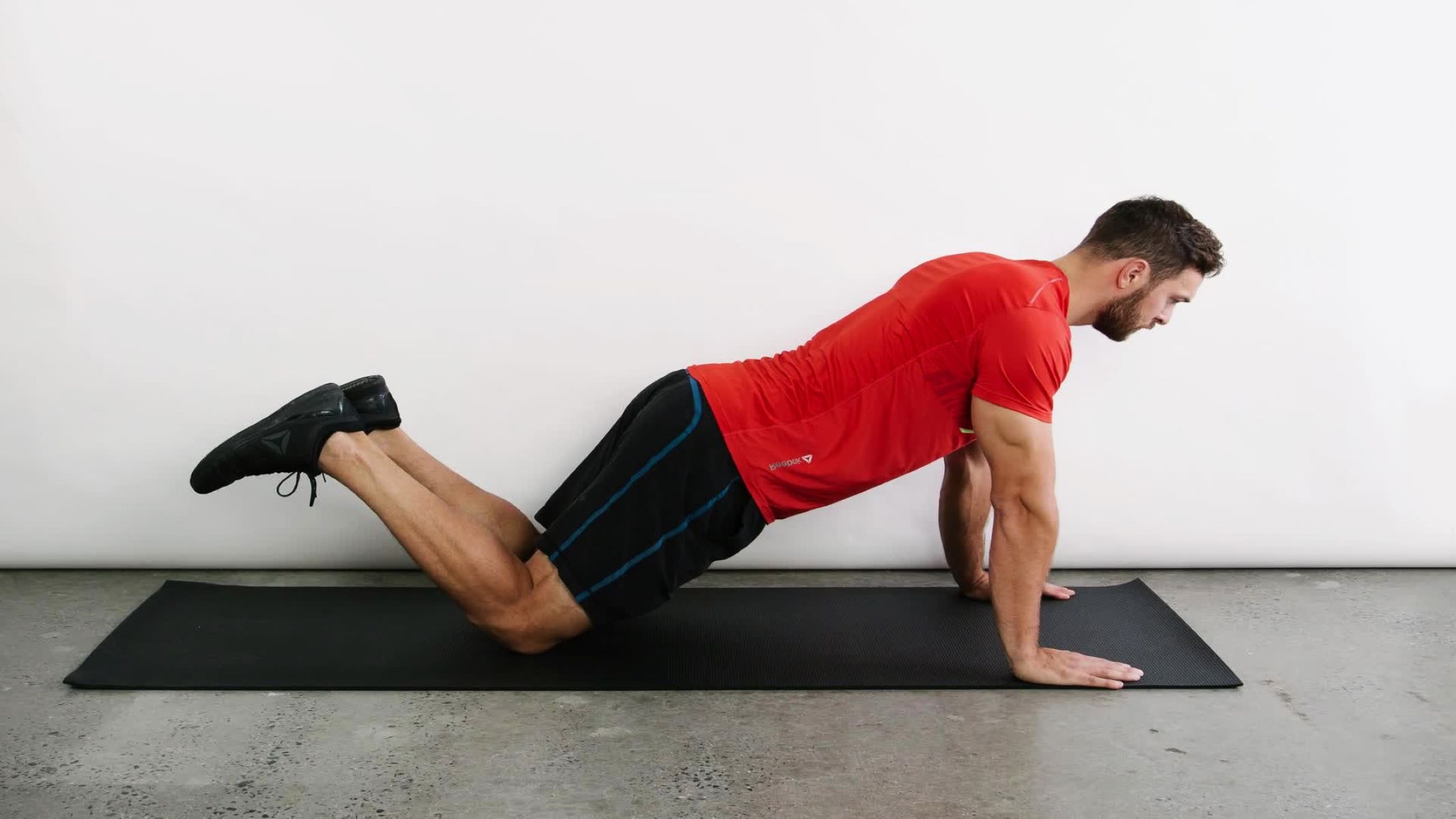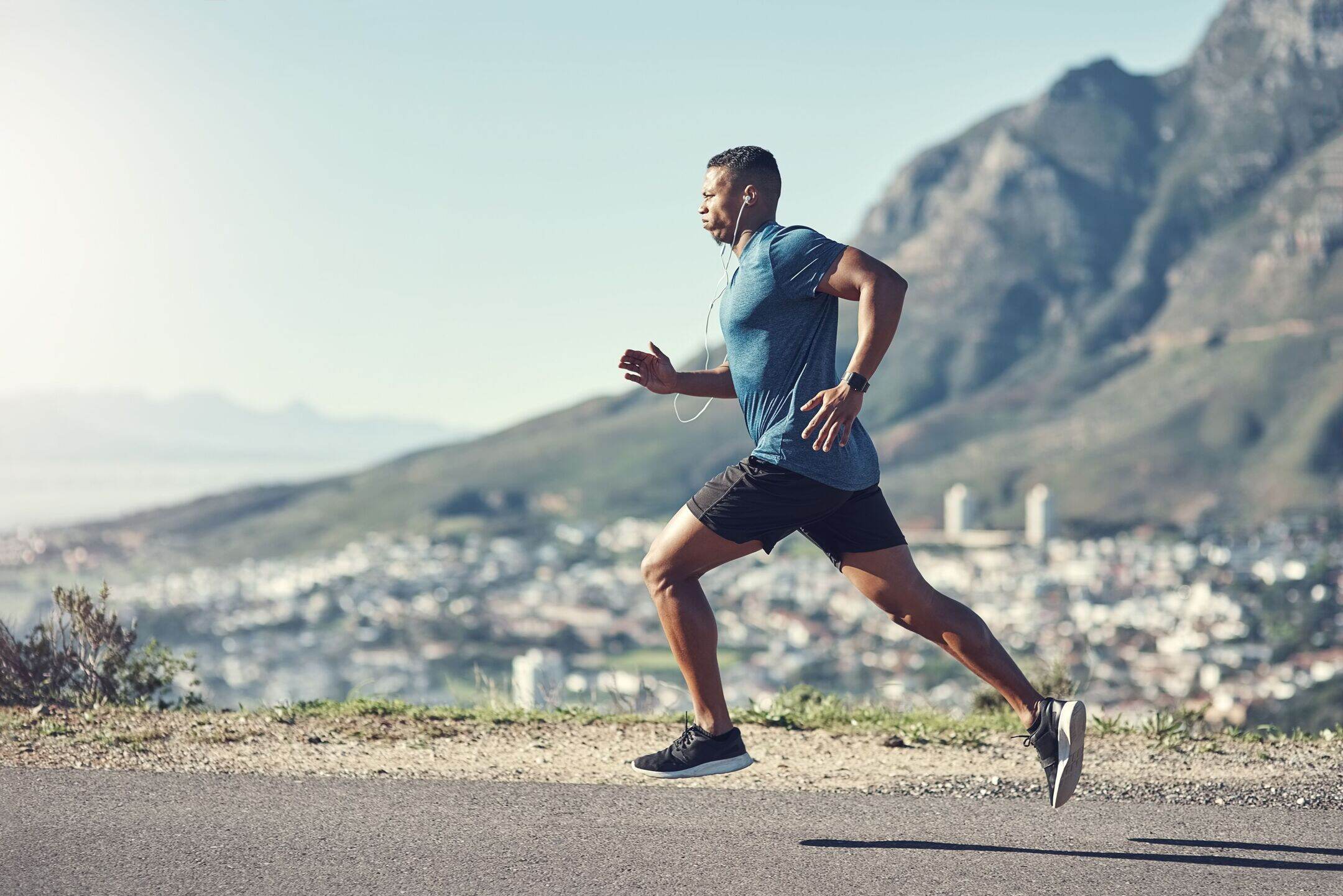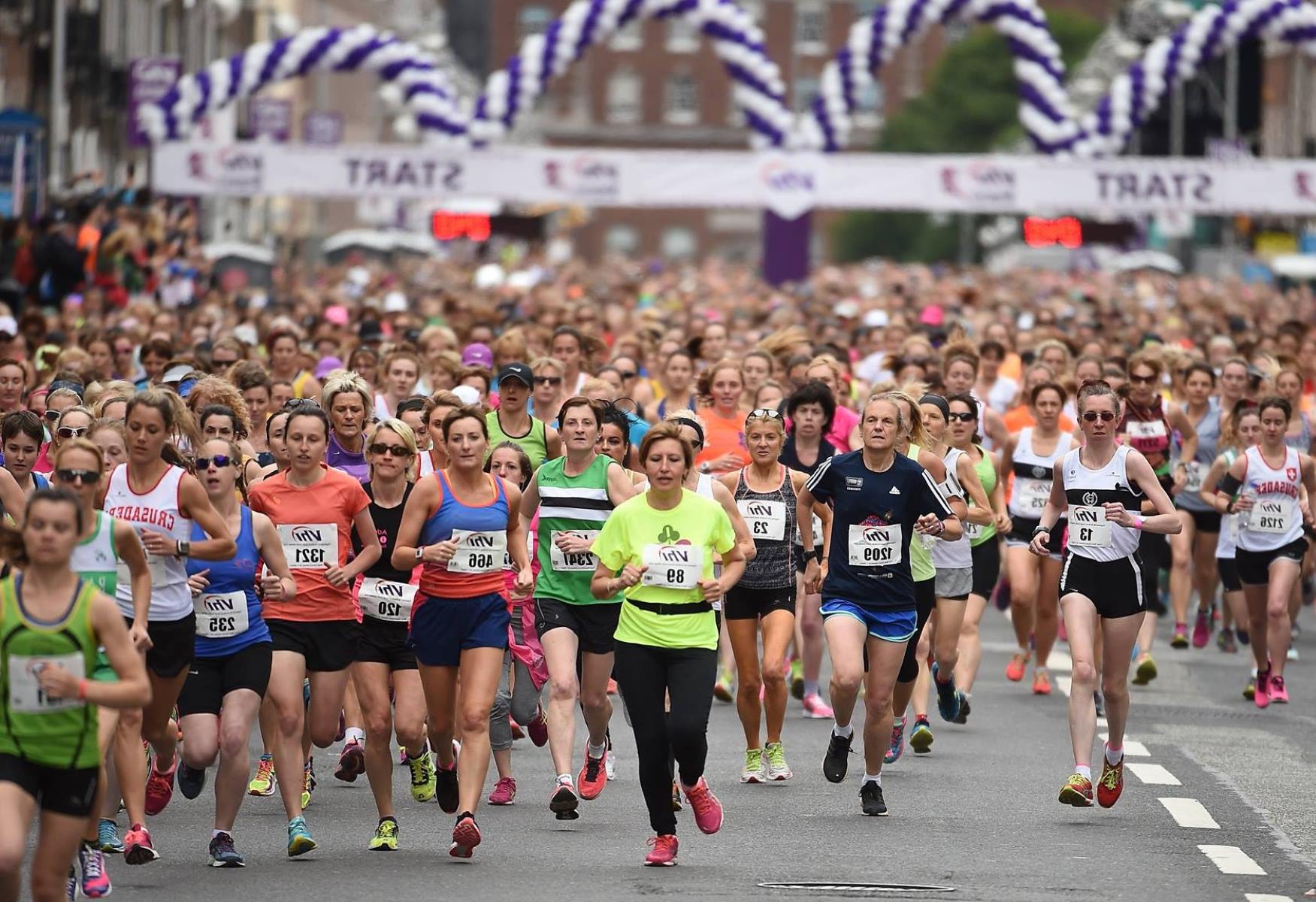Home>Training & Techniques>Running Techniques>Seven Steps To Improve Your Running Technique


Running Techniques
Seven Steps To Improve Your Running Technique
Published: February 22, 2024
Improve your running technique with these seven steps. Learn how to enhance your running techniques for better performance and injury prevention.
(Many of the links in this article redirect to a specific reviewed product. Your purchase of these products through affiliate links helps to generate commission for Therunningadvisor.com, at no extra cost. Learn more)
Table of Contents
Introduction
Running is a fantastic way to stay fit, relieve stress, and enjoy the great outdoors. Whether you're a seasoned runner or just starting out, improving your running technique can enhance your performance, reduce the risk of injury, and make your runs more enjoyable. In this article, we will explore seven essential steps to help you elevate your running technique and take your running to the next level.
By focusing on these key aspects of running technique, you can optimize your form, efficiency, and overall experience. From understanding proper foot strike to incorporating strength training, each step plays a crucial role in refining your running technique. So, lace up your running shoes and get ready to embark on a journey toward better running performance and enjoyment. Let's dive into the details of each step and discover how you can elevate your running technique to new heights.
Step 1: Understanding Proper Foot Strike
Proper foot strike is a fundamental element of efficient and injury-free running. It refers to the way your foot makes contact with the ground during each stride. Understanding and mastering the art of proper foot strike can significantly impact your running performance and overall experience.
There are three primary types of foot strikes: heel strike, midfoot strike, and forefoot strike. Each has its own set of advantages and considerations. While heel striking involves the heel making initial contact with the ground, midfoot striking occurs when the middle of the foot lands first, and forefoot striking involves the ball of the foot making contact with the ground.
Research suggests that a midfoot or forefoot strike may be more efficient and reduce the risk of certain types of injuries compared to a heel strike. However, it's important to note that the ideal foot strike pattern can vary from person to person based on factors such as running speed, running experience, and individual biomechanics.
To improve your foot strike, focus on landing with your foot directly underneath your body, rather than reaching out too far in front of you. This can help reduce the braking force and impact on your joints, leading to a smoother and more efficient stride.
Additionally, paying attention to your cadence, which refers to the number of steps you take per minute, can also influence your foot strike. A higher cadence is often associated with a shorter ground contact time and may promote a more midfoot or forefoot strike.
By understanding the nuances of proper foot strike and experimenting with different techniques, you can find the approach that works best for your unique running style. Remember, making gradual adjustments and being mindful of your body's feedback are key to refining your foot strike and optimizing your running technique.
Step 2: Improving Posture and Alignment
Maintaining proper posture and alignment is crucial for runners to optimize their performance, prevent injuries, and enhance overall running experience. When your body is aligned correctly, it allows for efficient movement, reduces unnecessary strain on muscles and joints, and promotes better breathing. Here are essential tips to improve your posture and alignment while running:
1. Head Position:
Keep your head in a neutral position, looking straight ahead with your chin parallel to the ground. Avoid tilting your head up or down, as this can lead to neck and shoulder tension.
2. Shoulders:
Relax your shoulders and keep them squared, avoiding hunching or rounding forward. Engage your upper back muscles to maintain a stable and open chest, allowing for optimal breathing.
3. Spine Alignment:
Ensure that your spine is in a neutral position, with a slight forward lean from the ankles. Avoid arching your back excessively or leaning too far forward, as these can lead to inefficient movement and increased impact on your lower body.
4. Core Engagement:
Engage your core muscles to stabilize your torso and pelvis. A strong core helps maintain proper alignment and reduces the risk of lower back discomfort during long runs.
5. Arm Position:
Keep your arms relaxed and bent at approximately 90 degrees. Avoid crossing your arms in front of your body, as this can disrupt your balance and rhythm. Your arm swing should be natural and coordinated with your stride.
6. Hip Alignment:
Ensure that your hips are level and facing forward. Avoid excessive hip rotation or tilting, as this can lead to imbalances and potential strain on the hip flexors and lower back.
7. Leg Alignment:
Maintain a straight and forward-facing leg alignment with each stride. Avoid excessive inward or outward rotation of the legs, which can lead to inefficient movement patterns and potential overuse injuries.
By focusing on these key aspects of posture and alignment, you can enhance your running technique and reduce the risk of common running-related injuries. Consistent practice and mindfulness of your body's alignment during runs can lead to significant improvements in your overall running performance and comfort.
Remember, making gradual adjustments and being mindful of your body's feedback are essential for refining your posture and alignment. With dedication and practice, you can develop a strong and efficient running posture that supports your long-term running goals.
Step 3: Increasing Stride Length
Increasing stride length is a key factor in improving running efficiency and speed. When executed correctly, a longer stride can propel you forward with less effort, leading to enhanced performance and a more fluid running experience. However, it's important to approach this aspect of running technique with mindfulness and gradual adjustments to avoid overstriding, which can increase the risk of injury. Here are essential tips to help you increase your stride length effectively:
-
Focus on Cadence: While it may seem counterintuitive, increasing stride length should not come at the expense of reducing your cadence (steps per minute). Instead of reaching for longer strides by overextending, concentrate on maintaining a quick and efficient cadence. Studies have shown that a higher cadence can lead to shorter ground contact time and improved running economy, which can naturally result in longer, more powerful strides.
-
Hip Mobility and Flexibility: Adequate hip mobility and flexibility are crucial for achieving a longer stride. Tight hip flexors and limited range of motion can restrict your ability to extend your legs fully with each stride. Incorporating dynamic stretches and targeted exercises to improve hip flexibility can help unlock your potential for a longer and more efficient stride.
-
Gradual Progression: Avoid attempting to dramatically increase your stride length in a single session. Instead, focus on gradual progression over time. By incorporating specific drills and form-focused exercises into your training regimen, you can gradually extend your stride length while maintaining proper form and minimizing the risk of overstriding.
-
Powerful Push-Off: Emphasize a strong and explosive push-off from the ground with each stride. This propels your body forward and naturally extends your stride length. Engaging the glutes and hamstrings during the push-off phase can contribute to a more powerful and efficient running stride.
-
Hill Training: Incorporating hill workouts into your training routine can help improve stride length and strength. Running uphill naturally encourages a longer stride and promotes greater power generation. Additionally, downhill running can enhance your ability to control and extend your stride while maintaining balance and stability.
By incorporating these strategies into your training and focusing on gradual improvements, you can effectively increase your stride length and unlock your full running potential. Remember, patience and consistency are key as you work toward refining your running technique and achieving longer, more efficient strides. With dedication and mindful practice, you can elevate your running performance and experience the benefits of an extended stride length.
Step 4: Enhancing Arm Swing
Enhancing arm swing is a critical aspect of refining running technique, as it plays a significant role in overall running efficiency, balance, and propulsion. The movement of the arms during running is interconnected with the motion of the legs and contributes to the generation of forward momentum. By focusing on optimizing arm swing, runners can improve their form, conserve energy, and enhance their running experience.
Coordination and Rhythm
Effective arm swing involves maintaining a coordinated and rhythmic movement that complements the stride pattern. As the right leg moves forward, the left arm swings forward, and vice versa. This coordinated motion helps counterbalance the rotational forces generated by the lower body, promoting stability and efficient forward propulsion.
Proper Positioning
The positioning of the arms during running is crucial for optimizing arm swing. Aim to keep your elbows bent at approximately 90 degrees, with your hands relaxed and lightly clenched. Avoid excessive tension in the hands and shoulders, as this can lead to unnecessary energy expenditure and muscle fatigue. Your arms should swing naturally and symmetrically, contributing to a smooth and balanced running gait.
Power Generation
While the primary function of arm swing is to assist in maintaining balance and rhythm, it also contributes to power generation during running. The movement of the arms can help propel the body forward, especially when coordinated with a strong push-off from the legs. Engaging the muscles of the upper body, including the shoulders, chest, and back, can enhance the power and efficiency of arm swing, leading to a more dynamic and fluid running motion.
Focus on Relaxation
Efficient arm swing is characterized by a sense of relaxation and fluidity. Tension in the arms and upper body can impede the natural movement of the arms and detract from overall running efficiency. By focusing on relaxation and maintaining a light, effortless arm swing, runners can conserve energy and reduce unnecessary muscular strain, allowing for a more sustainable and enjoyable running experience.
Mindful Practice
Improving arm swing requires mindful practice and attention to detail. Incorporating specific arm-focused drills and exercises into your training regimen can help refine the coordination, strength, and fluidity of arm swing. Additionally, paying attention to the feedback from your body during runs can provide valuable insights into areas for improvement and refinement of arm swing technique.
By dedicating time and effort to enhancing arm swing, runners can elevate their overall running performance and experience. Consistent practice and mindful attention to arm swing can lead to noticeable improvements in running efficiency, balance, and propulsion. With a focus on coordination, relaxation, and power generation, runners can optimize their arm swing and unlock their full potential on the road or trail.
Step 5: Breathing Techniques
Mastering proper breathing techniques is a fundamental aspect of refining running technique and optimizing performance. Effective breathing not only ensures an adequate oxygen supply to the muscles but also promotes relaxation, endurance, and overall running efficiency. By focusing on intentional breathing patterns and strategies, runners can enhance their respiratory capacity and elevate their running experience.
Rhythmic Breathing
Rhythmic breathing involves coordinating your inhalations and exhalations with your running stride, promoting a steady and efficient breathing pattern. A commonly practiced rhythmic breathing pattern is the 3:3 technique, where runners inhale for three strides and exhale for three strides. This rhythmic cycle aligns breathing with the natural cadence of running, promoting a sense of balance and control.
Diaphragmatic Breathing
Engaging the diaphragm during breathing is essential for maximizing oxygen intake and promoting efficient gas exchange in the lungs. Diaphragmatic breathing, also known as belly breathing, involves drawing air deep into the lungs by expanding the diaphragm and abdomen. This technique allows for a greater volume of air to enter the lungs, enhancing oxygenation and reducing the feeling of breathlessness during runs.
Mindful Breathing
Practicing mindfulness during breathing can help runners maintain focus, manage stress, and regulate their breathing rhythm. By directing attention to the sensation of air entering and leaving the body, runners can cultivate a sense of calm and presence during runs. Mindful breathing techniques can also aid in managing fatigue and promoting mental clarity, contributing to a more enjoyable and sustainable running experience.
Read more: Improve Your Running With This Hyrox Workout
Cadence-Linked Breathing
Linking breathing patterns to running cadence can optimize oxygen utilization and energy efficiency. Coordinating inhalations and exhalations with foot strikes or arm swings can help synchronize breathing with the body's movement, promoting a harmonious and balanced running rhythm. This approach can enhance overall running economy and reduce the feeling of breathlessness, especially during intense or prolonged runs.
Breathing Relaxation Techniques
Incorporating relaxation techniques into breathing can alleviate tension and promote a sense of ease during runs. Emphasizing relaxed facial muscles, softening the jaw, and releasing tension in the shoulders can contribute to a more fluid and effortless breathing experience. By cultivating a relaxed breathing posture, runners can conserve energy and maintain a steady flow of oxygen to the muscles, supporting endurance and performance.
By integrating these breathing techniques into their running practice, individuals can refine their respiratory capacity, enhance relaxation, and optimize oxygen utilization. Consistent focus on rhythmic, diaphragmatic, and mindful breathing, coupled with cadence-linked and relaxation techniques, can lead to significant improvements in running efficiency and overall well-being. With dedication and mindful practice, runners can harness the power of intentional breathing to elevate their running technique and experience the transformative benefits of optimized respiratory function.
Step 6: Incorporating Strength Training
Incorporating strength training into your running routine can significantly enhance your overall performance, reduce the risk of injuries, and promote long-term running success. While running primarily engages the lower body muscles, a well-rounded strength training program targets various muscle groups, including the core, upper body, and stabilizing muscles, to improve overall strength, stability, and running economy.
Importance of Strength Training for Runners
Strength training plays a crucial role in addressing muscle imbalances, enhancing muscular endurance, and fortifying the body against the repetitive impact of running. By targeting specific muscle groups through resistance exercises, runners can improve their running posture, form, and power output. Additionally, strength training contributes to the development of stronger connective tissues, such as tendons and ligaments, which are essential for withstanding the demands of running and reducing the risk of overuse injuries.
Read more: The Benefits And Techniques Of Running
Key Components of a Strength Training Program for Runners
-
Core Strengthening: A strong core provides stability and support for the entire body during running. Incorporating exercises such as planks, Russian twists, and leg raises can help strengthen the abdominal, oblique, and lower back muscles, leading to improved posture and reduced risk of lower back discomfort.
-
Lower Body Strength: Targeting the muscles of the legs and hips through exercises like squats, lunges, and calf raises can enhance lower body strength, power, and muscular endurance. Stronger leg muscles contribute to improved propulsion and efficiency during running, especially when navigating inclines and varied terrain.
-
Upper Body Conditioning: While running primarily involves the lower body, maintaining upper body strength is essential for overall balance and posture. Incorporating exercises such as push-ups, pull-ups, and shoulder presses can help runners maintain a balanced and efficient arm swing, contributing to overall running economy and stability.
-
Stabilization and Balance: Integrating exercises that focus on stability and balance, such as single-leg squats, stability ball exercises, and proprioceptive drills, can enhance overall body control and reduce the risk of falls or injuries, especially during trail running or uneven surfaces.
Implementation and Progression
When incorporating strength training into a running routine, it's essential to start with a manageable workload and gradually progress to more challenging exercises and resistance levels. Consistency and proper form are key to reaping the benefits of strength training without compromising running performance or increasing the risk of overtraining.
By integrating a well-designed strength training program into your running regimen, you can improve muscular strength, endurance, and overall running performance. Remember to listen to your body, prioritize recovery, and seek guidance from fitness professionals to tailor a strength training plan that complements your running goals and enhances your long-term running technique.
Step 7: Consistency and Patience
Consistency and patience are the cornerstones of refining running technique and achieving long-term success in the sport. While it's natural to seek immediate results and rapid improvements, the journey toward mastering running technique requires dedication, perseverance, and a steadfast commitment to gradual progress. Here's a closer look at the significance of consistency and patience in refining running technique:
Embracing Consistency
Consistent training forms the bedrock of refining running technique. By adhering to a regular training schedule and maintaining a steady rhythm of runs, individuals can reinforce muscle memory, improve cardiovascular endurance, and gradually refine their running form. Consistency allows for the gradual adaptation of the body to the demands of running, leading to enhanced efficiency, endurance, and overall performance. Whether it's through daily runs, structured training plans, or targeted workouts, the cumulative effect of consistent training lays the groundwork for sustainable improvements in running technique.
Long-Term Progress
Patience is a virtue that holds immense value in the context of refining running technique. It's essential to recognize that significant improvements in running form and performance often unfold over an extended period. By embracing a patient mindset and acknowledging that progress may unfold gradually, runners can cultivate resilience, mental fortitude, and a deeper appreciation for the incremental advancements in their running technique. Patience allows individuals to stay focused on the long-term trajectory of their running journey, fostering a sense of perseverance and dedication to the refinement of their technique.
Mitigating the Risk of Injury
Consistent, patient progress in refining running technique also serves as a protective measure against the risk of overuse injuries. Rushing the process or attempting drastic changes to running form without allowing the body to adapt can increase the likelihood of injury. By approaching technique refinement with patience and consistency, runners can mitigate the risk of overtraining, excessive strain on muscles and joints, and the development of poor movement patterns. This deliberate approach prioritizes the preservation of physical well-being, allowing for sustainable and injury-free running experiences.
Mental and Emotional Resilience
Consistency and patience in refining running technique extend beyond the physical realm, encompassing mental and emotional resilience. Embracing the iterative nature of technique refinement fosters a mindset of perseverance, adaptability, and self-awareness. It encourages individuals to navigate setbacks, plateaus, and challenges with a sense of resilience, recognizing that each run contributes to the cumulative refinement of their running technique. This mental fortitude not only enhances the running experience but also extends to other facets of life, promoting a resilient and determined outlook.
In essence, consistency and patience are indispensable virtues in the pursuit of refining running technique. By embracing these principles, individuals can lay a solid foundation for sustainable progress, injury prevention, and the cultivation of mental resilience. The amalgamation of consistent, patient efforts paves the way for enduring improvements in running technique, ultimately leading to a more fulfilling and rewarding running experience.

